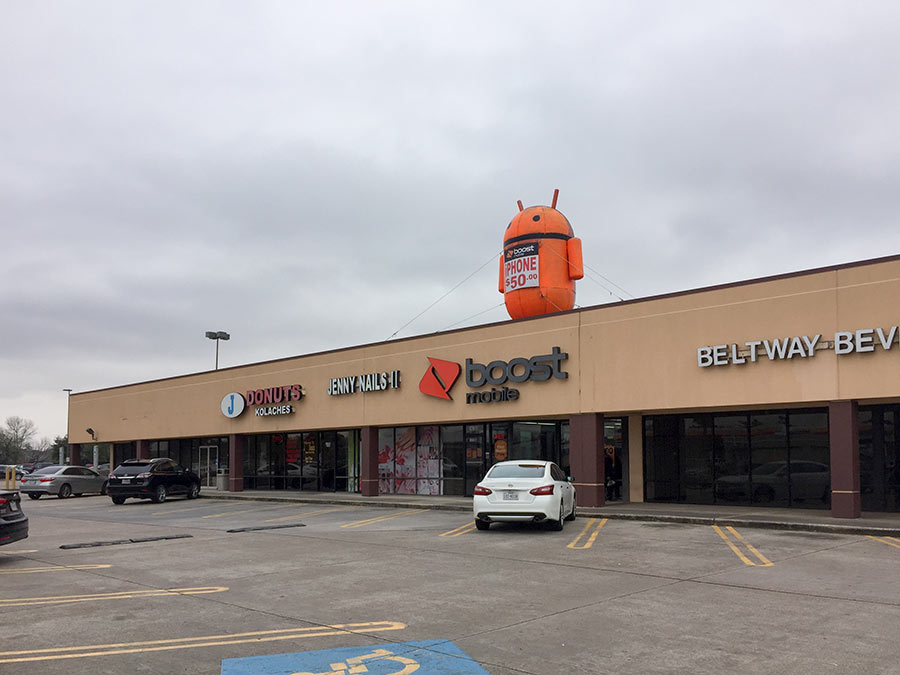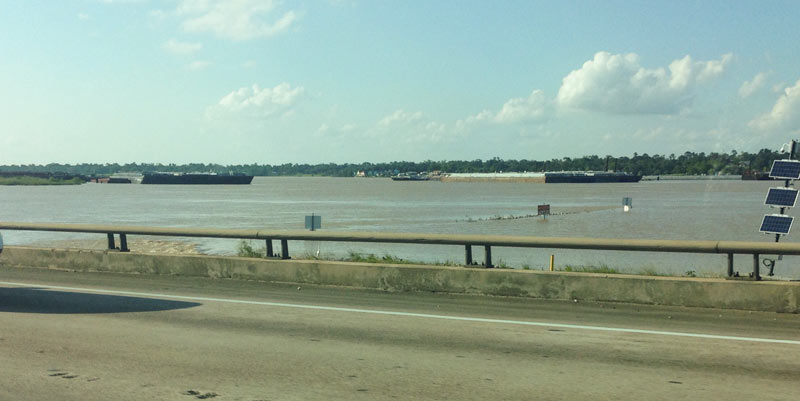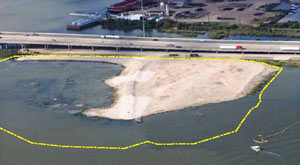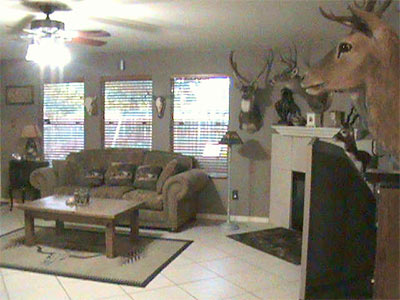

Like some kind of otherworldly brand ambassador, this large larger-than-life-sized inflatable now looks dutifully out over the strip center parking lot off Belway 8 and Woodforest Blvd., its antennae twitching in the wind. The building it tops — home to Jenny Nails II, J Donuts, Betlway Beverage, Dominos, a hair salon, and Boost Mobile — was once part of the Randalls-anchored retail complex dubbed the Eastbelt Centre that stopped being a thing when Galena Park ISD moved its administrative offices into the supermarket’s building nearly 2 decades ago.
That converted structure lies just next door to the strip building . . .




